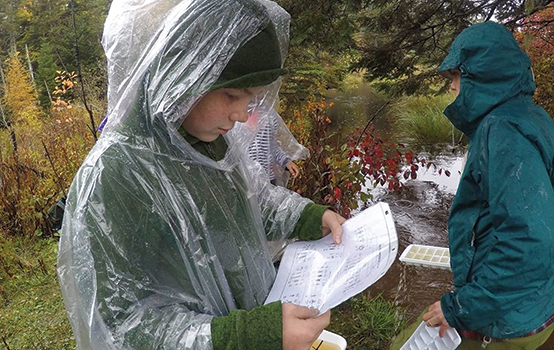Asking students what they want to learn leads a school to make changes that give students touched by trauma a new sense of control.
Seabrook Elementary sits at the end of a quiet street in a small coastal town in Maine’s most rural county. Home to just over 100 preK-6 students, the one-story brick building is bright and sunny, with colorful art projects decorating the long single hallway. The gym doubles as the school lunchroom, the English as a second language (ESL) classroom includes a school food pantry, and a small room off the library holds warm clothing, coats, and boots for those who need them. Nearly 70% of the children are eligible for free and reduced-price lunch. Although the primary language of the school is English, just over a third of the students are dual-language learners. They are children of migrant farmworkers who traveled from Central and South America to work in the surrounding blueberry fields, settled, and built a community.
In the 4th-grade classroom at Seabrook, you’ll find Jorge, a quiet and studious boy who works extra hard to understand his teacher’s instructions, knowing his immigrant parents cannot help him at night with his homework. Next door, a 3rd grader named Emma sits at a desk with a whiteboard and marker. After a traumatic experience as a very young child, Emma was diagnosed as selectively mute, and she communicates almost exclusively through writing. Her voice matters just as much as the other students’ voices, but no adult at her school has actually heard her speak. Across the room, Emma’s classmates, Rocky and Ben, have no trouble talking in class. Itching to be on the water with their lobster fishermen dads, they find all too many opportunities to distract each other from their lessons. Jorge, Emma, Rocky, and Ben have different stories and backgrounds, but they have one thing in common: Seabrook’s traditional school curriculum is not working for them. They’re not alone. For years, the school has had the lowest test scores and the highest absentee rates in the district.
So when our Transforming Rural Experience in Education (TREE) Research-Practice Partnership Team knocked on Seabrook’s door, the principal jumped at the opportunity for on-the-ground support. An initiative of the Cobscook Community Learning Center in Trescott, Maine, TREE (www.thecclc.org/tree-intro) offers a resource and instructional coach, an in-school mental health provider, and ongoing professional development to help schools and communities meet basic needs, support student development, and improve instructional practices. Research team members are Catherine Biddle of the University of Maine and Lyn Mikel Brown and Mark Tappan of Colby College, who work alongside the TREE practice team of Brittany Ray, Sarah Strickland, Laura Thomas, Ashley Cirone, and Maggie Burgos. The work of the team comes with an unusual expectation — we ask the principal and teachers to reimagine the role of students in the school’s transformation.
Listening to students
Student voice is not typically considered central to whole-school curricular redesign. As in most organizations, change in schools tends to happen from the top down, with the administration and the teachers identifying problems and proposing solutions. But TREE’s bottom-up approach is grounded firmly in the understanding that a research- informed, trauma-sensitive educational practice must adhere to several key principles, including safety, trust, relational connection, cultural responsiveness, and empowerment (Substance Abuse and Mental Health Services Administration, 2014). Empowerment is the linchpin. If students feel empowered, and if they experience opportunities to know what they know and feel what they feel through the “pleasure of completed action” (van der Kolk, 2014, p. 218), then they will experience school as more safe, trustworthy, relationally responsive, and equitable. As a result, long-lasting change is more likely (Sarason, 1993).
The students’ ideas and suggestions were often surprising to teachers, widening their perspective and opening the door to new ways of teaching.
Richard Ryan and Edward Deci (2013) argue that students feel a stronger sense of intrinsic motivation when their needs for autonomy, competence, and relatedness are satisfied. Autonomy is key — when teachers maximize students’ “sense of choice and volitional engagement” (p. 199) while minimizing coercion and control, students feel more motivated, and academic success is more likely. Such an approach is particularly important in schools where many students experience significant adversity and stress, yet in many cases, schools respond to these students’ academic or behavioral troubles “by imposing more control on them, not less, further diminishing their fragile sense of autonomy” (Tough, 2016, p. 64).
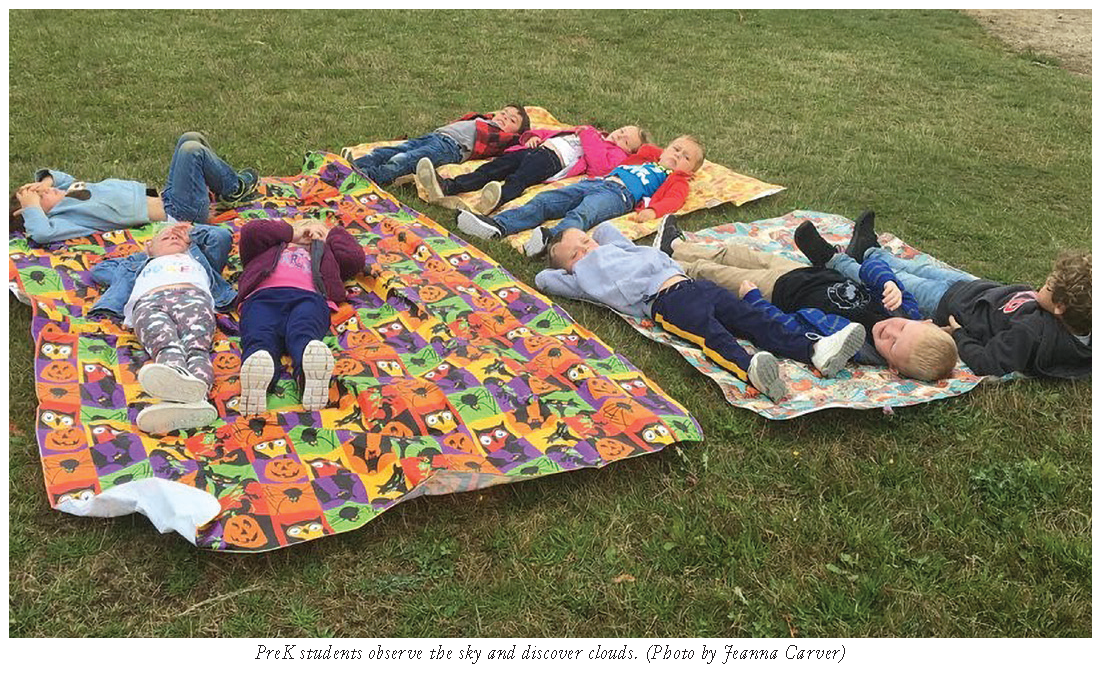
Recognizing that the Seabrook students would benefit from more control over their learning, our TREE team of undergraduate students, practitioners, and researchers set out to develop a student-empowered approach to curricular reform. When we first asked students about the kind of changes to the curriculum they would like to make, we were met with confusion. “But we don’t have the power,” a 5th grader responded. “The teacher tells us what to do.”
“OK,” we replied, “but what if you did have the power? If you could change anything, what would it be?” Over and over, we heard a version of the same answer: more outdoor time together, more recess, more movement.
- “We wish we had more time outside.”
- “We used to be able to play with the younger kids at recess, and we miss spending time with them.”
- “Even 10 more minutes of recess would be fine.”
- “We love to go on field trips.”
- “We’re stressed from work and we want a break. Sometimes the teacher takes the classes out for a walk because she knows how much we like to be outside.”
When we spoke with the teachers, we learned that the students were onto something. Morning recess had been taken away to provide breakfast for children arriving to school hungry, leaving the older students with just 10 minutes each day to play outside, separate from the younger students. No one liked this situation much, but reality ruled — children needed to be fed and teachers could not afford to give up instructional time, given the pressure to improve test scores. “Student voice?” one teacher said to us, “Kids don’t have a voice because, honestly, we don’t have a lot of voice.” In spite of the high percentage of ESL students and the poverty rate in their community, Seabrook teachers faced the same state-mandated benchmarks as those in the rest of the county and state.
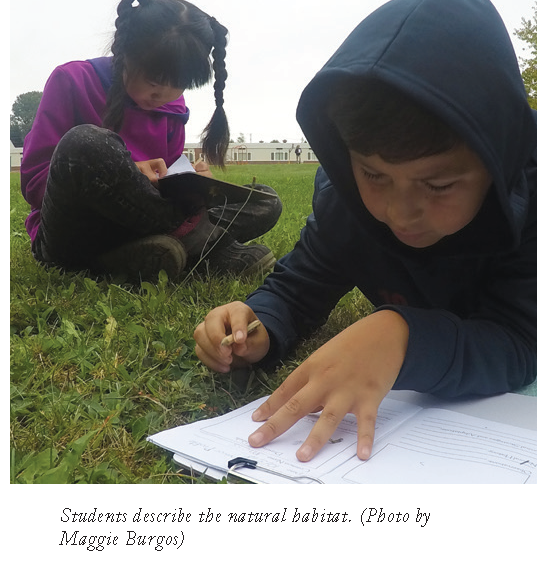
Microadventures
Having listened to students’ views on what they wanted, we decided to seek out ways to incorporate movement and outdoor time into the curriculum. One way to make the curriculum more active was to use microadventures. In outdoor education vernacular, microadventures are small, low-cost, easy-to-run expeditions focused on getting students outside, regardless of socioeconomic class, location, skills, and ability. What if we brought microadventures into this rural under-resourced school? Could we integrate microadventures into the classroom curriculum and align them with learning goals?
With Maine’s Common Core Learning Standards in hand, and in conversation with teachers and students about the concepts children struggled with the most, we began creating microadventures using existing school facilities and the natural resources surrounding the school. On a warm sunny day, for example, prekindergartners covered the grass with blankets to lie on their backs and discover the clouds, they drew pictures in their field journals, read It Looked Like Spilt Milk, and later told cloud stories. Fourth graders walked in the woods on a bright brisk fall day to collect leaves and learn about photosynthesis. On an especially frigid winter morning, 5th-grade students used blue painter’s tape to cover the gym floor with geometric figures. They sat inside shapes or stretched alongside them to measure angles and determine the area and perimeter, filling the gym with colorful sticky notes of their findings. These microadventures were a direct response to students’ expressed desire to get outdoors and experience their classrooms and school grounds as a living, moving learning environment.
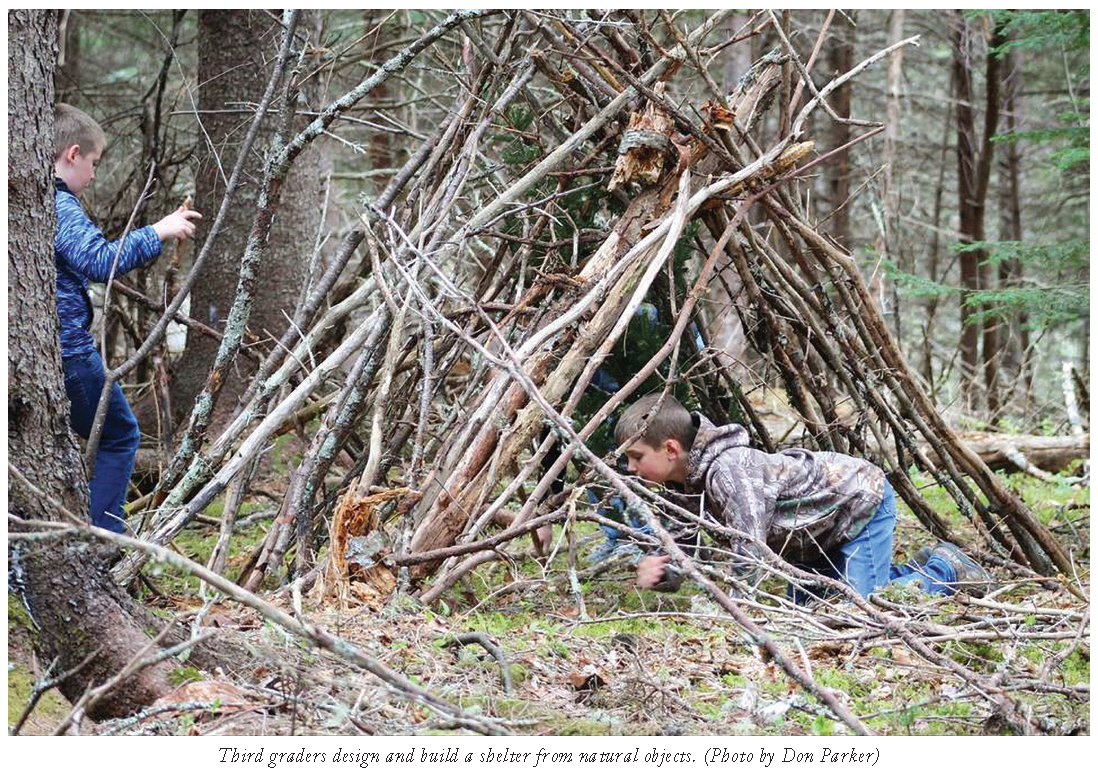
Somedays
Microadventures made for a natural pairing with “somedays,” another TREE initiative designed to introduce teachers to the connection between student voice and student engagement (Preble & Gordon, 2011). In this activity, every child and teacher in the school completed the sentence: “Someday I would like to . . . ,” indicating one activity they hoped to experience at school before summer. Many of the children’s wishes included, unsurprisingly, a desire to play and learn together. Soon, someday microadventures emerged as student-initiated learning opportunities. With the support of the TREE coach, teachers began handing over the curriculum to the children, creating microadventures based on students’ expressed desires.
This combination of someday and microadventure excited Emma, the 3rd grader who did not speak aloud. On her someday paper, Emma wrote, “I want to teach a science class.” Her teacher was both surprised and doubtful. “I’m thinking, how is she going to teach when she won’t talk?” But somedays were about wishes fulfilled. Working with her whiteboard and with the support of the TREE coach, Emma developed a microadventure in which she would teach her classmates to make snow. Together Emma and the coach collected materials and read directions; writing notes and making suggestions, Emma learned and practiced.
When the day came for Emma’s lesson, her teacher was amazed: “We came out here on the picnic table . . . and she taught the other students how to make snow. . . . That was amazing to see. She had them put out all their materials. She talked.” For the first time, Emma audibly used her words at school. Emma’s someday microadventure allowed her not only to connect with and master the material, but also to interact and socialize with her peers in a way her teacher did not think was possible.
If students feel empowered, then they will experience school as more safe, trustworthy, relationally responsive, and equitable.
When Ben and Rocky’s 3rd-grade classmate expressed a someday wish to build a shelter outside, the two boys were elated. The coach connected with a local outdoor school to develop plans, and the teacher reminded parents to send their children to school dressed for the winter cold. On the shelter-building day, Rocky came to school with all the right clothes and a backpack full of tools. He and Ben were all in. They pondered shapes, tried out ideas, and stepped up in ways their teacher had never seen. Their suggested construction plans revealed budding math skills that had gone unrecognized in the classroom. Perhaps more important, they were excited about learning. Ben’s mother was grateful others could finally know what she knew about her son:
He has trouble at school just staying focused on basic things and he gets very frustrated. And like he just shuts down. He liked the day that they built the shelters. He said that was awesome. But he’s an outdoor boy. . . . I feel like sometimes he’s untapped on the potential that he has.
While his classmates were wishing for time to play and learn outside, Jorge wanted something different. In a predominantly White school, where Latinx children have limited opportunity to speak Spanish during the academic day, Jorge saw an opportunity. He invited his mother to read a book in Spanish to his class while he translated the story for the other students. Although Jorge was typically a shy child in school, his mother was struck by his ability to make the other students laugh:
The fun part was that as I was reading Spanish, like most of the kids wouldn’t really understand, so my son read the English version, and he would read it in English as I was reading in Spanish . . . and he would give it that extra sense of humor so the kids would laugh when he would read it again.
By inviting his mother to class, Jorge offered a way to model dual-language learning and bridge the divide he and other Latinx students experience between home and school. Like Emma, Rocky, and Ben, he also revealed a hidden part of himself: the funny, social Jorge who struggles to emerge in his English-only classroom.
Bringing it together
The effective combination of somedays and microadventures is an ongoing balancing act. Microadventures at Seabrook are the result of students’ expressed desire for more movement and outdoor time, informed by teachers’ expert identification of academic areas in need of attention. Somedays deepen engagement in the learning process by enabling students to initiate learning goals and influence curricular development. Both contribute to motivation and learning, but microadventures without somedays miss the healing impact of ongoing student-empowered learning and its connection to cultural responsiveness and equity. Somedays, while developed and practiced within the context of deep listening to children, can become add-ons that are too easily let go without a clear vision from adults committed to remaking their curriculum. Creatively and strategically combined, however, we find that they engage students and teachers as cocreators of their learning environments in ways that can also achieve classroom and schoolwide learning goals.
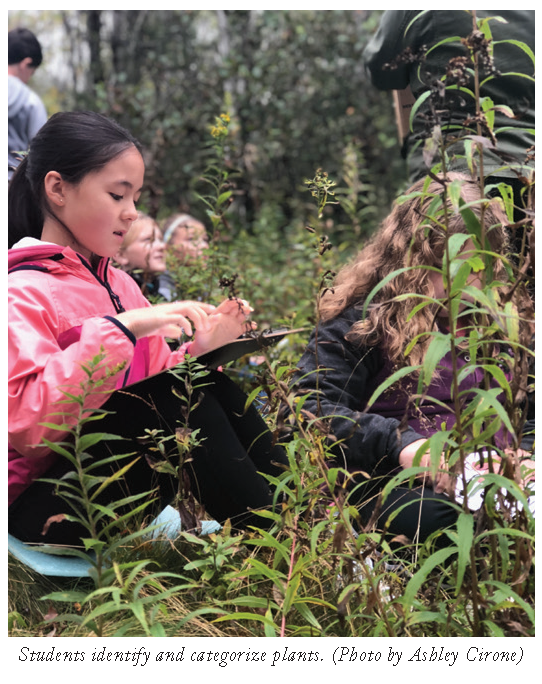
There are, of course, challenges associated with this work. These include balancing competing priorities — for example, when student desires do not match learning standards or when student somedays just aren’t feasible. In these circumstances, we embrace the honesty and transparency that are so necessary to relational safety, trust, and empowerment by sharing our limitations and engaging students in problem solving with us, inviting their creative solutions. These more complicated someday microadventures are often, in the end, the most meaningful to students because they offer additional time with the coach or their teacher to reflect on what they truly care about, to identify their strengths and interests, and to reimagine ways to bring their desires into being.
TREE and Seabrook’s commitment to student empowerment and voice via someday microadventures unsettles traditional educational practice. Teachers are asked to reexamine their assumptions about children and youth, especially their beliefs about childhood agency and capabilities and the potential for partnering with young people on curriculum development. Such work raises questions about the nature of relationally responsive and culturally sensitive schools, the best use of teacher time and school resources, how to navigate tensions between content coverage and sharing power with students, how to value both adult experience and student expertise, and how to interrogate old habits of mind, such as tendencies to fall back into a more familiar, vertical instructional approach. We don’t always have answers, but we believe these struggles are both necessary and worthy.
Learning that heals
Like other children across the country who grow up in high-poverty rural areas and attend under-resourced schools, Seabrook students face intersecting challenges that include economic, food, and housing insecurity, exacerbated by lack of access to both medical and mental health supports. Some students, like Emma, have experienced trauma and adversity that overwhelm their capacity to cope (Rice & Groves, 2005). Others, like Jorge and his Latinx classmates in a largely White and conservative rural community, experience the toxic stress of discrimination (Carter, 2007).
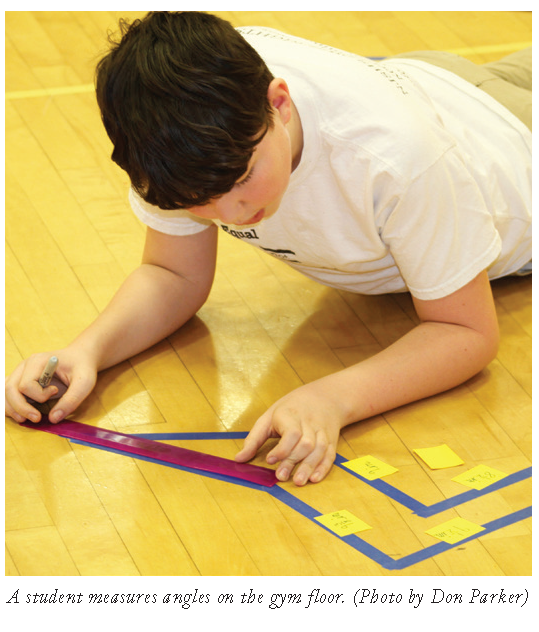
Trauma, by definition, includes experiences of powerlessness, so it’s no surprise that building young people’s sense of personal control over their environments promotes healing. Teachers cannot always know what challenges their students bring to school, but they can, as we’ve done with someday microadventures, create opportunities for children to voice their needs, passions, and strengths and, by so doing, enable them to cocreate their learning experiences. Someday microadventures thus “contribute to a sense of purpose, power, and control over life situations,” so necessary to restoring well-being (Ginwright, 2018).
Seeing students as individuals with prior knowledge and present expertise is critical to creating safe, responsive, and culturally sensitive schools. As one teacher explained, conversations with students about their someday microadventures opened the door not only to more sharing of feelings and opinions, but also to students’ sense of responsibility and ownership over their learning:
Students feel more powerful, stronger, and that makes them share more, how they feel, because some students were like, “Oh, before we never had a chance to share how we feel, and now we can.” I think that’s giving them power and they feel welcome to share how they feel about the school. They shouldn’t be afraid to tell us like, “I don’t like this,” or, “I believe this should be changed.” I think now students have more power to tell us how they feel about a class, about the school, what they may think will work better, or what will make them feel better. I think that’s really helpful.
The students’ ideas and suggestions were often surprising to teachers, widening their perspective and opening the door to new ways of teaching. “Some of it’s just simple, but complex at the same time,” one teacher said. “It’s something that was an easy thing to accomplish, but complex, and you’re like, ‘Oh, wow. These kids really need more of this, or less of that.” Another summed up the advantages of rethinking the curriculum to consider student voice:
We’re listening to the kids. I never thought that kids are looking at things differently. We think we’re doing everything possible, and the kids are not quite feeling it; it’s so good to hear each other. Shifting your mind doesn’t really cost anything; it’s a cheap change . . . people just need to shift their thinking.
These student-initiated project-based activities have been part of everyday life at Seabrook Elementary for more than a year now. Teachers report feeling less stressed and burned out, less like they’re “throwing boulders into quicksand.” Students are more engaged, school climate has improved, and last spring saw a rise in standardized test scores.
Somedays and microadventures are powerful tools for teachers seeking to redesign the curriculum in collaboration with students. While Seabrook Elementary has on-the-ground support to reimagine teaching and learning, student-initiated curricular change can, in fact, happen in any context. By offering children more power and control over their learning environments, such practices help teachers support and encourage all students to be academically successful.
References
Carter, R.T. (2007). Racism and psychological and emotional injury: Recognizing and assessing race-based traumatic stress. The Counseling Psychologist, 35 (1), 13–105.
Ginwright, S. (2018). The future of healing: Shifting from trauma-informed care to healing centered engagement. Medium. https://medium.com/@ginwright/the-future-of-healing-shifting-from-trauma-informed-care-to-healing-centered-engagement-634f557ce69c
Preble, B. & Gordon, R. (2011). Transforming school climate and learning: Beyond bullying and compliance. Thousand Oaks, CA: Corwin.
Rice, K. & Groves, B. (2005). Hope and healing: A caregiver’s guide to helping young children affected by trauma. Washington, DC: Zero to Three Press.
Ryan, R. & Deci, E. (2013). Toward a social psychology of assimilation: Self-determination theory in cognitive development and education. In B. Sokol, F. Grouzet, & U. Müller (Eds.), Self-regulation and autonomy: Social and developmental dimensions of human conduct (pp. 191-207). Cambridge, UK: Cambridge University Press.
Sarason, S. (1993). The predictable failure of educational reform. San Francisco, CA: Jossey-Bass.
Substance Abuse and Mental Health Services Administration. (2014). SAMHSA’s concept of trauma and guidance for a trauma-informed approach (HHS Publication No. 14-4884). Rockville, MD: Author.
Tough, P. (2016). Helping children succeed: What works and why. New York, NY: Houghton-Mifflin.
Van der Kolk, B. (2014). The body keeps the score: Brain, mind, and body in the healing of trauma. New York, NY: Viking.
NOTE: Seabrook Elementary and all student names in this article are pseudonyms.
Citation: Brown, L.M. & Flaumenhaft, J. (2019). Student-empowered curricular change. Phi Delta Kappan, 100 (6), 13-19.
ABOUT THE AUTHORS

Jenny Flaumenhaft
JENNY FLAUMENHAFT is a senior and outdoor educator majoring in Education and English at Colby College.

Lyn Mikel Brown
LYN MIKEL BROWN is a professor of education at Colby College, Waterville, Maine. She is the author of Powered by Girl: A Field Guide for Supporting Youth Activists .

